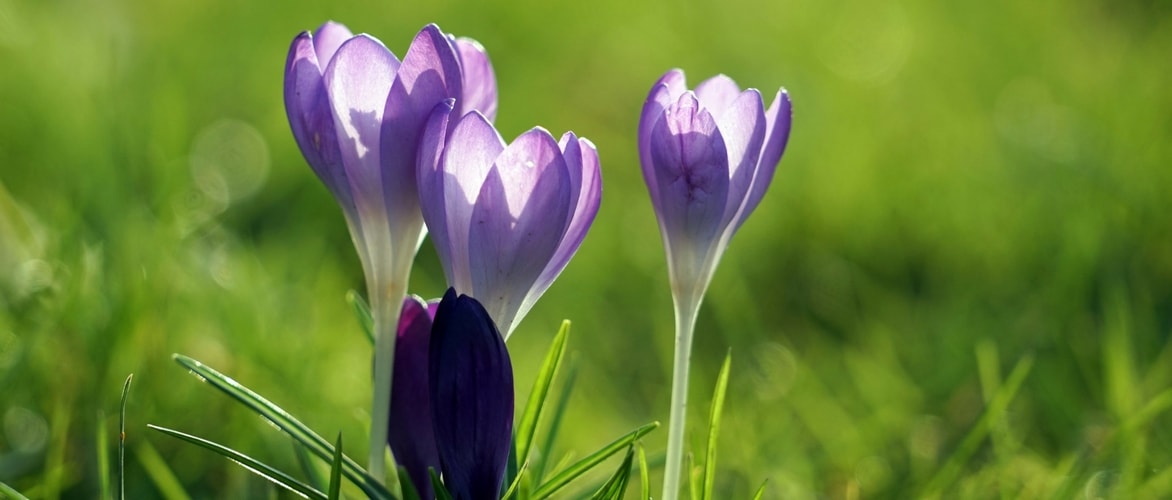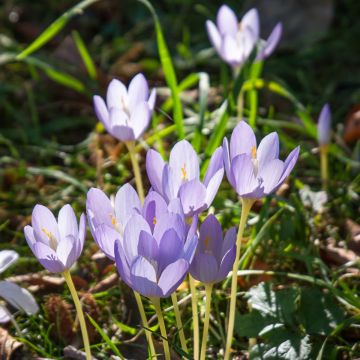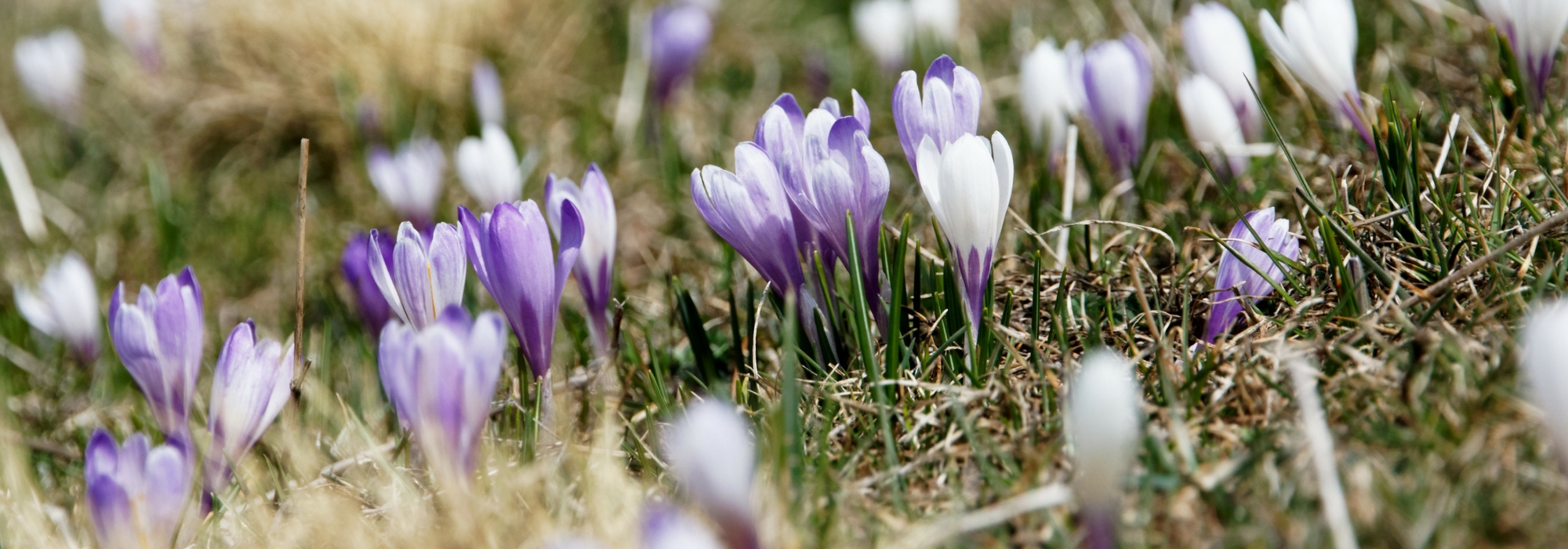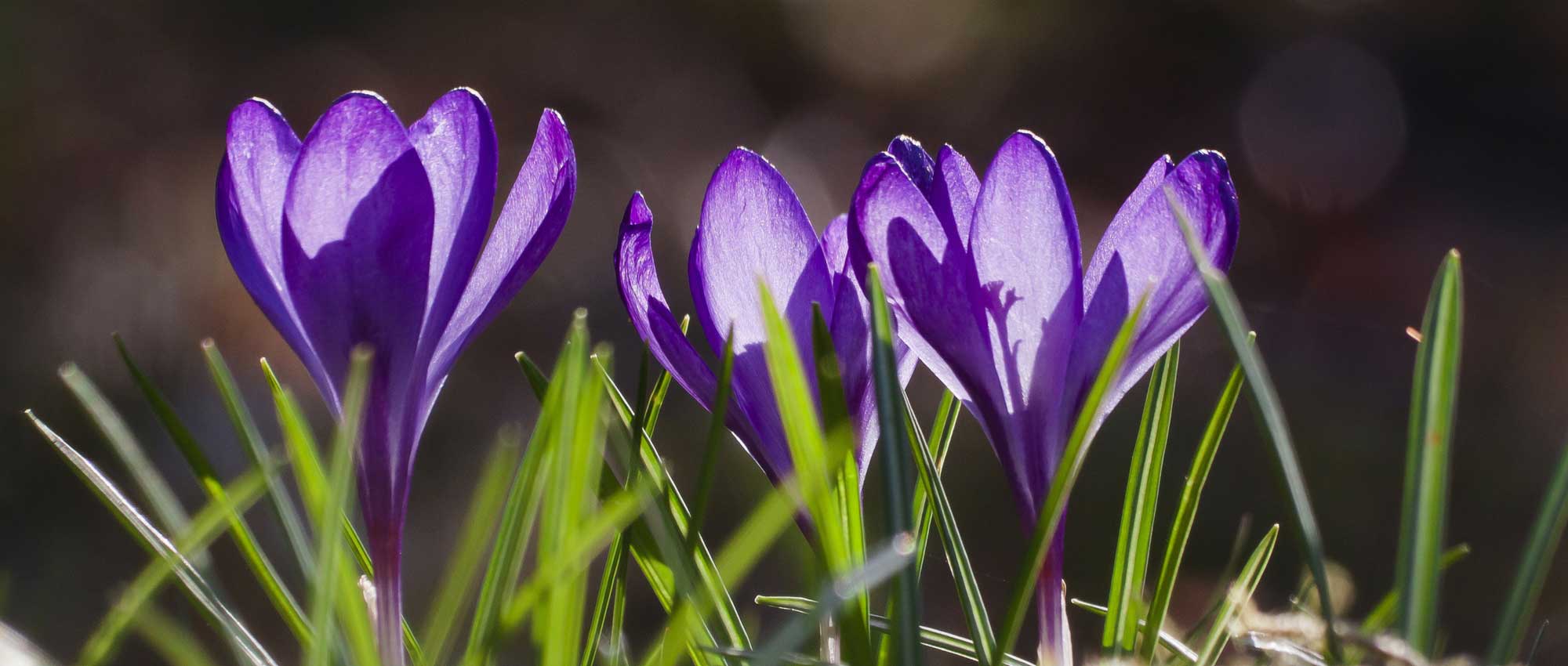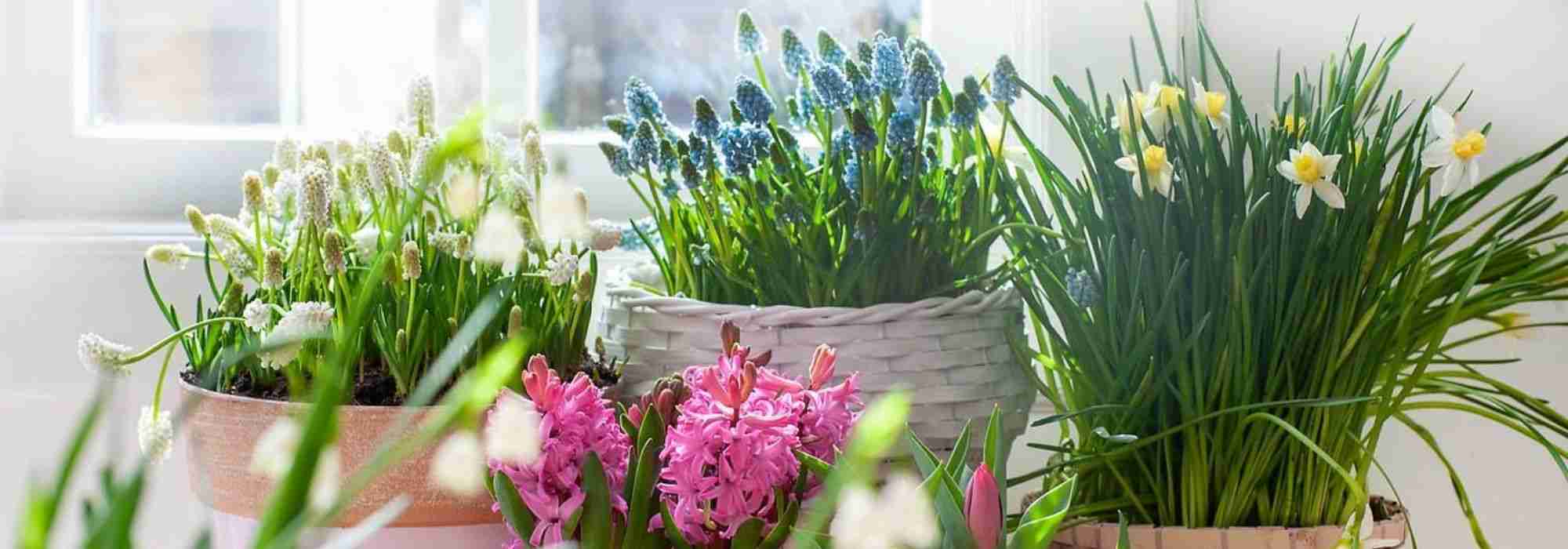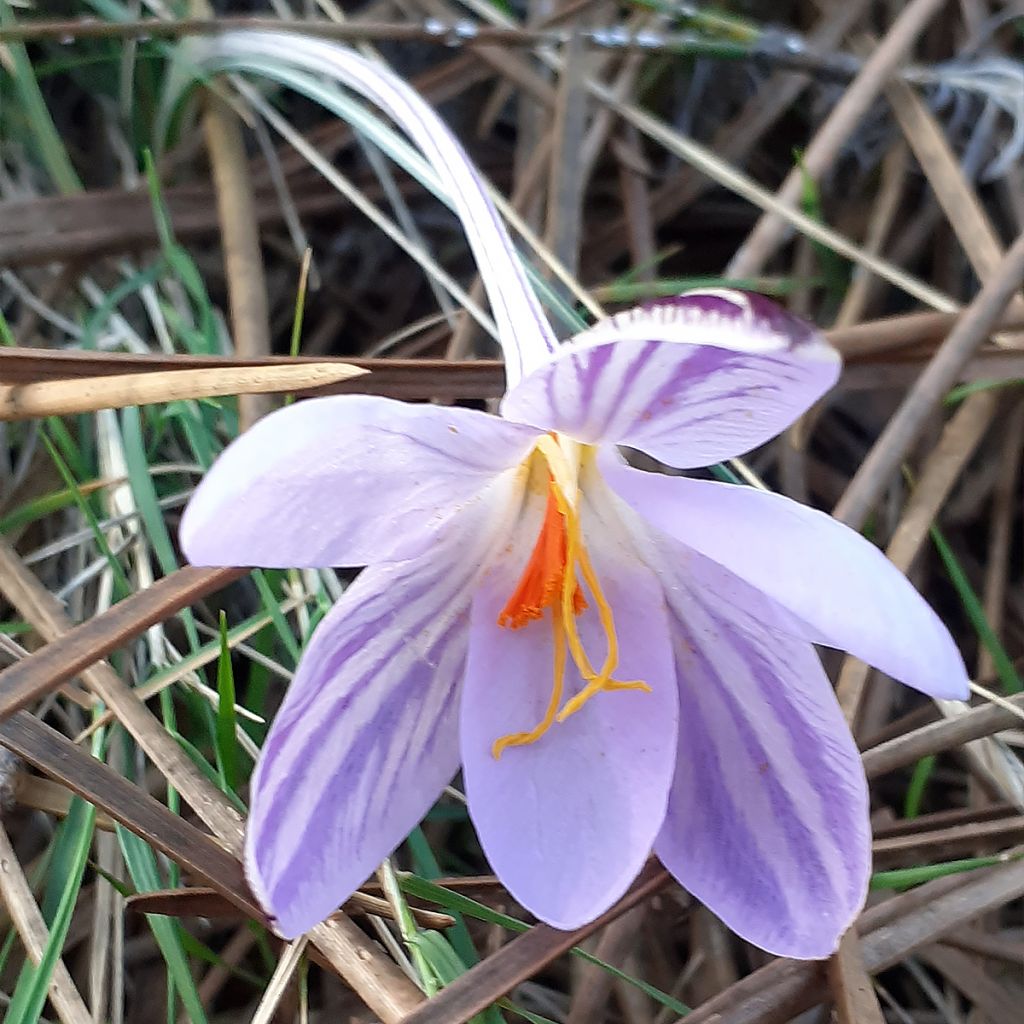

Crocus corsicus - Crocus de Corse
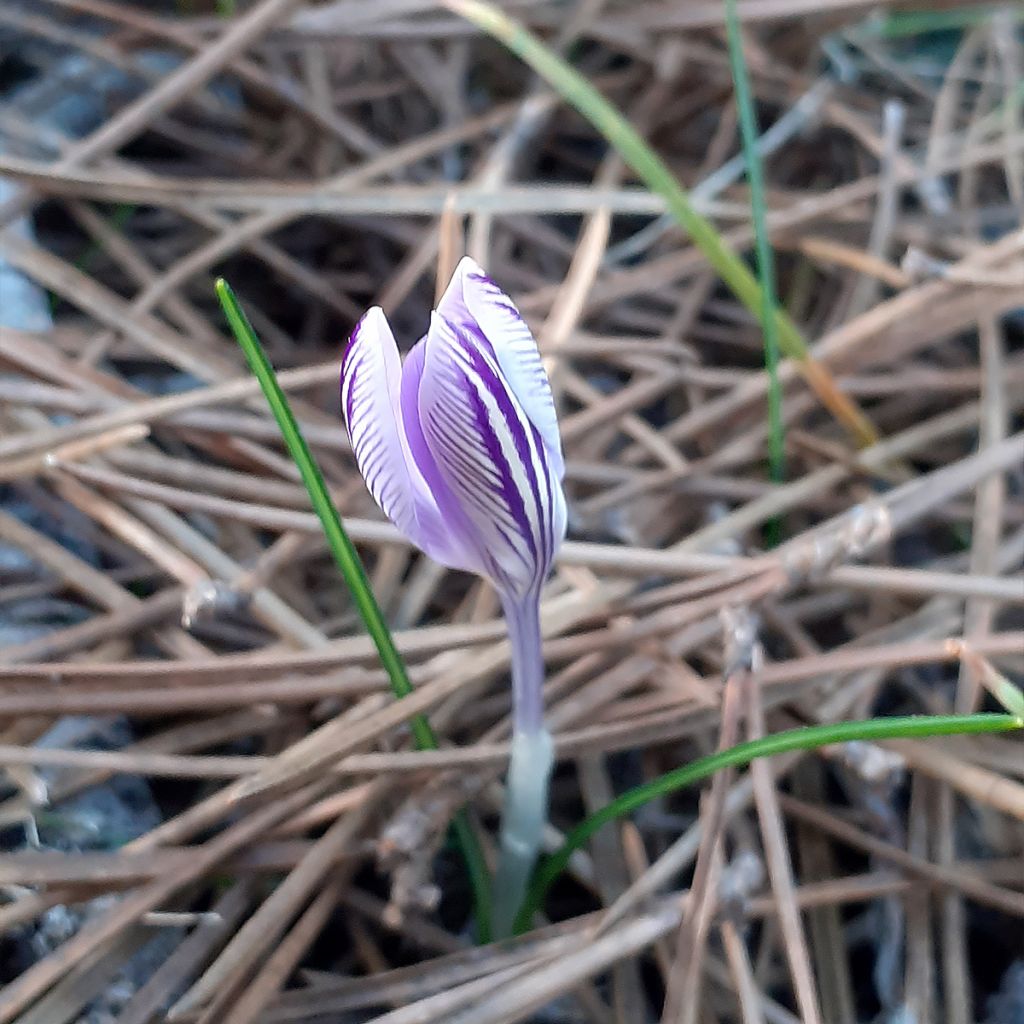

Crocus corsicus - Crocus de Corse
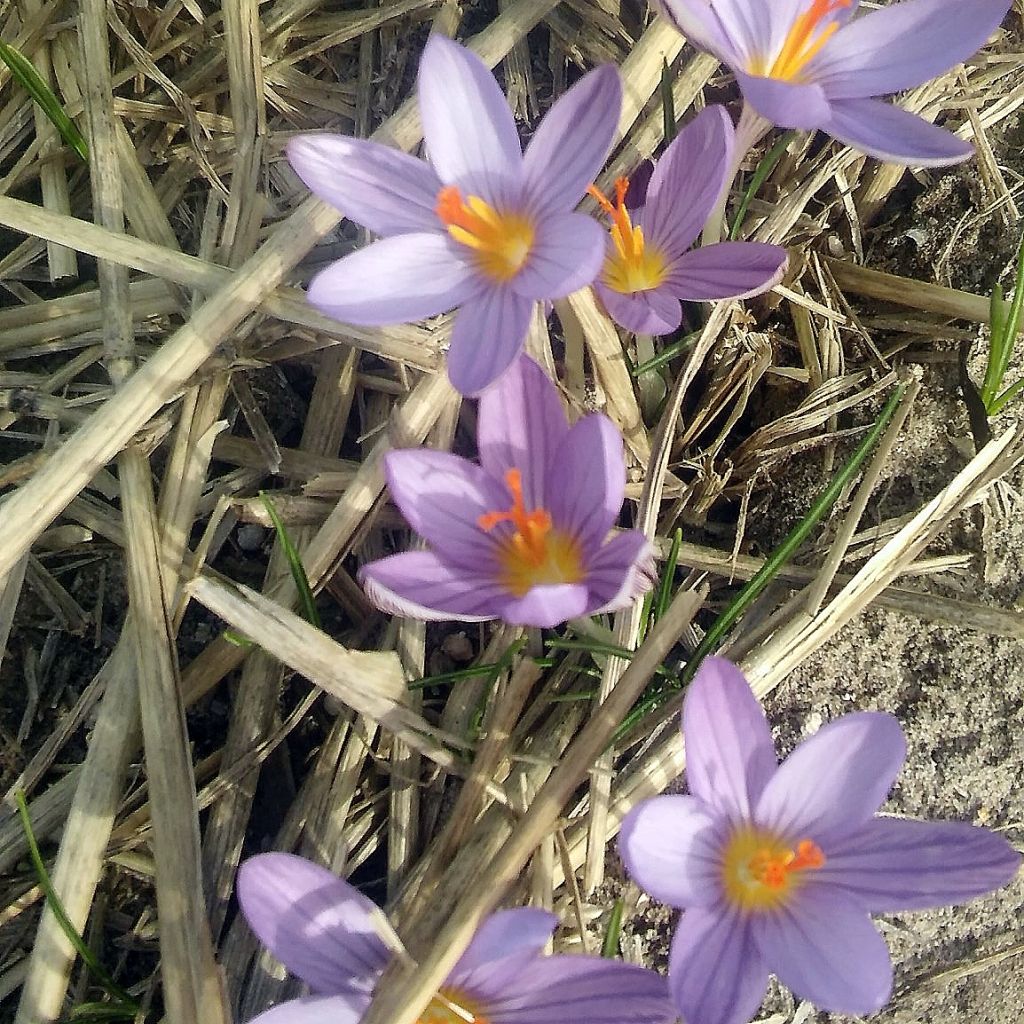

Crocus corsicus - Crocus de Corse
Crocus corsicus
Crocus corsicus
Corsican crocus
Delighted to find them again one year after planting (at least 1, which already has 2 flowers), end of December. The spreading petals are indeed more of a cream yellow color. One small downside, these flowers are super fragile, often breaking in the wind, which is a shame...
cy, 30/12/2023
Special offer!
Receive a €20 voucher for any order over €90 (excluding delivery costs, credit notes, and plastic-free options)!
1- Add your favorite plants to your cart.
2- Once you have reached €90, confirm your order (you can even choose the delivery date!).
3- As soon as your order is shipped, you will receive an email containing your voucher code, valid for 3 months (90 days).
Your voucher is unique and can only be used once, for any order with a minimum value of €20, excluding delivery costs.
Can be combined with other current offers, non-divisible and non-refundable.
This plant carries a 6 months recovery warranty
More information
We guarantee the quality of our plants for a full growing cycle, and will replace at our expense any plant that fails to recover under normal climatic and planting conditions.
Does this plant fit my garden?
Set up your Plantfit profile →
Description
Crocus corsicus is also known as the Corsican saffron crocus, due to the local use of the red stigmas from its flowers to prepare a spice. Originating from Corsica and Sardinia, this species is not very resistant to cold and damp weather. It thrives in dry summers, making it more suitable for gardeners in warm regions or for cultivation in pots. Its lovely pink-purple flowers with red stigmas bloom for over a month, from winter to summer depending on the climate, emitting a pleasant honey scent. It can be planted in rocky, slightly acidic to acidic soil in a gravel garden or rockery, where it will slowly naturalise.
Crocus corsicus is a botanical species closely related to C. minimus, which is mainly distinguished by its yellow-orange stigma instead of red. Like all crocuses, it belongs to the Iridaceae family. Its natural habitat consists of rocky slopes and scrubland in Corsica, from the coast to the mountains. In this region, it blooms from December-January to March, in acidic soil. When cultivated in different climates, the plant flowers from March to August. British crocus enthusiasts claim that this species can be grown in the ground in southern England, in well-drained soil. The deciduous foliage emerges from the ground before the flowers. It consists of slender linear leaves, which are single and alternate. They are dark green with prominent white central veins. Each bulb produces 1 to 2 long flowers measuring 3 to 4cm (1 to 2in). Shaped like elongated cups, they first display their mauve-pink-lilac undersides with beautiful violet-purple markings. Then they open into a star shape with 6 branches. It is not uncommon for the 3 outer sepals to be cream-yellow in colour, veined with purple on the outside. The centre of the flower is filled with stamens grouped in a 'tube'. The flowers close at night and in bad weather, but open wide in the sun and even in partial shade. The leaves dry up shortly after flowering, while the bulb enters a dormant state. The 'bulbs' here are corms. In plant morphology, a corm is an underground storage organ that resembles a bulb but is formed by a swollen stem surrounded by scales.
Crocus corsicus will delight collectors of rare plants. In a mild climate garden, it thrives in rockeries and at the base of bushes, when its radiant flowering emerges as a beautiful surprise. It will thrive in well-drained soil, on the edge of light woodland with Corsican hellebore, for example. It can also be planted along a pathway, or en masse at the base of deciduous trees (lilac, mock orange, smoke bush) with Anemone blanda and Cyclamen coum, or in a raised bed, and of course, paired with other early-flowering crocuses.
Crocus roots can contract like a spring, allowing the plant to settle at its ideal depth.
Plant habit
Flowering
Foliage
Botanical data
Crocus
corsicus
Iridaceae
Corsican crocus
Mediterranean
Other Spring Crocus
View all →Planting and care
Plant the small bulbs from September to October in very well-drained rocky soil. Ideally, the soil should be acidic (non-limestone). Plant at a depth of 5cm (2in) and with a spacing of 5cm (2in), or in groups of three every 15 to 20cm (6 to 8in). Crocus corsicus loves mild winters and dry summers. In Corsica, it blooms from December to February, but elsewhere it will bloom from March to August. It is best to leave the bulbs in place, where they will form increasingly floriferous clumps. They also work well in pots on a patio, which you can shelter from excessive cold in winter and from humidity during its resting period. Corsican crocus prefers a sunny exposure where the flowers will completely open. The ideal substrate should be sandy-gravelly with a pH between 5.5 and 7. It can tolerate temperatures down to -8°C (17.6°F). It withstands summer drought when it is at rest. The plants have the best effect when planted in groups of 5 to 10 specimens. Corsican crocus multiplies slowly. Care should be taken not to cut the foliage before it turns yellow. Corms are susceptible to excess moisture, which can cause them to rot during their resting period. Rodents are fond of these corms, and snails and slugs eat all aerial parts of the plant.
Planting period
Intended location
Care
Planting & care advice
-
, onOrder confirmed
Reply from on Promesse de fleurs
Haven't found what you were looking for?
Hardiness is the lowest winter temperature a plant can endure without suffering serious damage or even dying. However, hardiness is affected by location (a sheltered area, such as a patio), protection (winter cover) and soil type (hardiness is improved by well-drained soil).

Photo Sharing Terms & Conditions
In order to encourage gardeners to interact and share their experiences, Promesse de fleurs offers various media enabling content to be uploaded onto its Site - in particular via the ‘Photo sharing’ module.
The User agrees to refrain from:
- Posting any content that is illegal, prejudicial, insulting, racist, inciteful to hatred, revisionist, contrary to public decency, that infringes on privacy or on the privacy rights of third parties, in particular the publicity rights of persons and goods, intellectual property rights, or the right to privacy.
- Submitting content on behalf of a third party;
- Impersonate the identity of a third party and/or publish any personal information about a third party;
In general, the User undertakes to refrain from any unethical behaviour.
All Content (in particular text, comments, files, images, photos, videos, creative works, etc.), which may be subject to property or intellectual property rights, image or other private rights, shall remain the property of the User, subject to the limited rights granted by the terms of the licence granted by Promesse de fleurs as stated below. Users are at liberty to publish or not to publish such Content on the Site, notably via the ‘Photo Sharing’ facility, and accept that this Content shall be made public and freely accessible, notably on the Internet.
Users further acknowledge, undertake to have ,and guarantee that they hold all necessary rights and permissions to publish such material on the Site, in particular with regard to the legislation in force pertaining to any privacy, property, intellectual property, image, or contractual rights, or rights of any other nature. By publishing such Content on the Site, Users acknowledge accepting full liability as publishers of the Content within the meaning of the law, and grant Promesse de fleurs, free of charge, an inclusive, worldwide licence for the said Content for the entire duration of its publication, including all reproduction, representation, up/downloading, displaying, performing, transmission, and storage rights.
Users also grant permission for their name to be linked to the Content and accept that this link may not always be made available.
By engaging in posting material, Users consent to their Content becoming automatically accessible on the Internet, in particular on other sites and/or blogs and/or web pages of the Promesse de fleurs site, including in particular social pages and the Promesse de fleurs catalogue.
Users may secure the removal of entrusted content free of charge by issuing a simple request via our contact form.
The flowering period indicated on our website applies to countries and regions located in USDA zone 8 (France, the United Kingdom, Ireland, the Netherlands, etc.)
It will vary according to where you live:
- In zones 9 to 10 (Italy, Spain, Greece, etc.), flowering will occur about 2 to 4 weeks earlier.
- In zones 6 to 7 (Germany, Poland, Slovenia, and lower mountainous regions), flowering will be delayed by 2 to 3 weeks.
- In zone 5 (Central Europe, Scandinavia), blooming will be delayed by 3 to 5 weeks.
In temperate climates, pruning of spring-flowering shrubs (forsythia, spireas, etc.) should be done just after flowering.
Pruning of summer-flowering shrubs (Indian Lilac, Perovskia, etc.) can be done in winter or spring.
In cold regions as well as with frost-sensitive plants, avoid pruning too early when severe frosts may still occur.
The planting period indicated on our website applies to countries and regions located in USDA zone 8 (France, United Kingdom, Ireland, Netherlands).
It will vary according to where you live:
- In Mediterranean zones (Marseille, Madrid, Milan, etc.), autumn and winter are the best planting periods.
- In continental zones (Strasbourg, Munich, Vienna, etc.), delay planting by 2 to 3 weeks in spring and bring it forward by 2 to 4 weeks in autumn.
- In mountainous regions (the Alps, Pyrenees, Carpathians, etc.), it is best to plant in late spring (May-June) or late summer (August-September).
The harvesting period indicated on our website applies to countries and regions in USDA zone 8 (France, England, Ireland, the Netherlands).
In colder areas (Scandinavia, Poland, Austria...) fruit and vegetable harvests are likely to be delayed by 3-4 weeks.
In warmer areas (Italy, Spain, Greece, etc.), harvesting will probably take place earlier, depending on weather conditions.
The sowing periods indicated on our website apply to countries and regions within USDA Zone 8 (France, UK, Ireland, Netherlands).
In colder areas (Scandinavia, Poland, Austria...), delay any outdoor sowing by 3-4 weeks, or sow under glass.
In warmer climes (Italy, Spain, Greece, etc.), bring outdoor sowing forward by a few weeks.






























